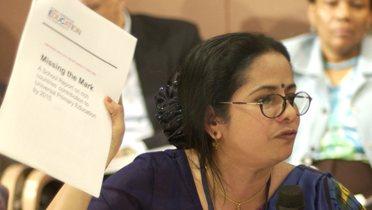EXECUTIVE SUMMARY
In the face of unprecedented global challenges, effective
global cooperation increasingly requires
a partnership between state and non-state actors.
Many international institutions now involve non-state
actors in arenas that were once the exclusive province
of states. The paper analyzes the evolution of
civil society participation in the governance of international
institutions and highlights the shift from a
model based on consultation toward a model of multistakeholder
governance. The paper argues that consultation
is a less effective approach to involving civil
society in achieving the mission of these institutions
and suggests that more robust forms of multi-stakeholder
participation by civil society can foster greater
accountability and better deliberation. It analyzes
competing claims about the desirability of including
civil society in the governance of international institutions
and suggests that an emerging constituency
model can promote more effective multi-stakeholder
governance. Constituency structures are already central
features of several global health institutions and
are now being contemplated by institutions in other
sectors, including by the Education for All—Fast Track
Initiative.
Multi-stakeholder approaches to governance are likely
to become more widespread in the years to come in
order to harness the contributions of a plethora of
private actors engaged in responding to a wide range
of global challenges. Even with enhanced cooperation
between states, it is increasingly clear that non-state
actors are essential to responding to key challenges
across a wide range of sectors. Although it is possible
to imagine expanded cooperation between state and
non-state actors without opening up the governance
structures of international institutions, it is less likely
that these institutions will be successful in the longrun
without a shift toward greater multi-stakeholder
involvement in the institutions themselves.
The Brookings Institution is committed to quality, independence, and impact.
We are supported by a diverse array of funders. In line with our values and policies, each Brookings publication represents the sole views of its author(s).





